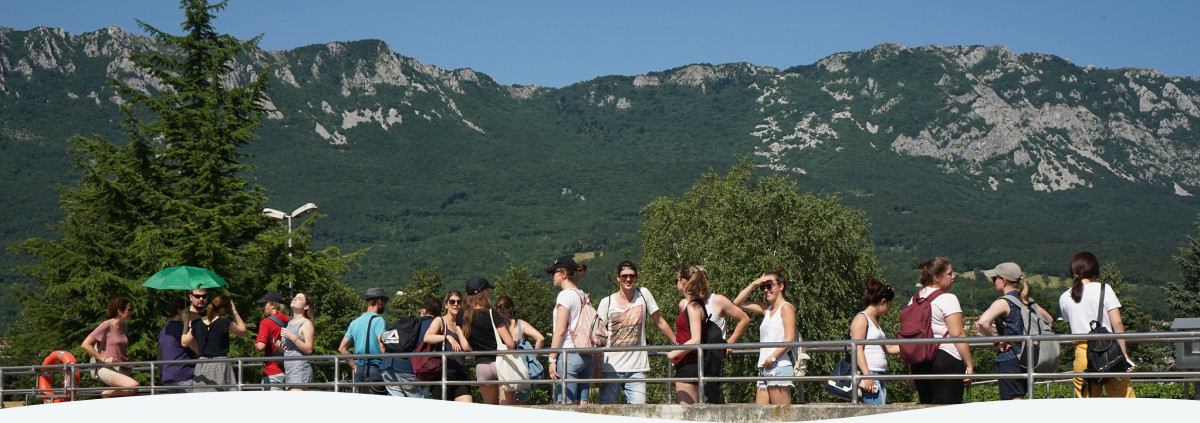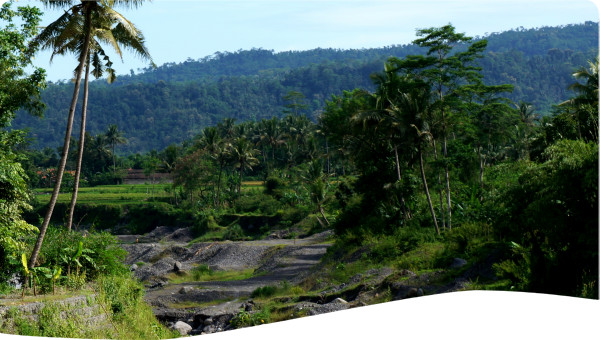In Slovenia, water is extracted for drinking water, energy, fish-farming, irrigation and technological purposes. In order to avoid over-extraction, an Environmental Flow framework has been implemented, assessing within what limits water can be extracted, using hydromorphological, hydrological, hydraulic and ecological criteria. The case shows that it is important to combine policy decisions with expert evaluations.
On the rivers and streams, there are water abstractions for drinking water, energetic use, fish-farming, irrigation and technological purposes, many are still planned. Great diversity of hydromorphological types of rivers in Slovenia and biological diversity are the reasons for EF (Environmental Flow) determination for every river separately.
The main focus of EF is the quantity of water which preserves ecological balance in the river and in the riparian zone. The changes can be only within the limits, in which the stream is able to preserve its own character and function of preservation of the natural balance. EF is determined before every intervention in the stream, which can have an effect on the water regime, on the structure and on the function of the stream ecosystem. As the most important criteria for evaluation of EF hydromorphological, hydrological, hydraulic and ecological criteria were chosen.
According to the criteria two different methods for determination of EF are used: hydrological and ecological method. Hydrological method is timely short in comparison with ecological method. For the ecological method, an inventory of flora, fauna and habitats has to be carried out and landscape evaluation has to be done. Both of the methods were applied on lowland, karst and alpine streams in Slovenia. The intention is to apply this methodology on more rivers, according to different water users, amount of water abstraction and ecoregions.
The starting points for the definition of an EF in both methods are the basic hydrological and hydraulic parameters, such as the mean annual flow, the mean minimum flow, the minimum flow, etc. Where there is very limited, or no hydrological data, it has been suggested that hydrological observations should be carried out for two years for new water abstractions, especially in the minimal flow periods.
The Ministry of the Environment and Spatial Planning required that EFAs be undertaken on all running waters, where an EF had not yet been specified. As a result, from 1992 the EF was assessed for more than 180 sections of running waters in Slovenia according to the methods described above. Most of EFs were assessed for the existing water users (123 study sites).
The independent researches involved in developing the criteria for EF played a major role in the programme of studies to determined most values of EF in Slovenia. The time needed to complete a particular study varied from a few months for small streams to two years for larger rivers. The EFA sought to increase water flow in the riverbed in a manner improved conditions for organisms in the water and in the riparian zone. This typically meant that especially in the low-flow periods, smaller quantities of water could be abstracted from the running waters.
For most small streams, the EF was determined according to the hydrological method. For the rivers with large water abstractions, the value of EF was mostly determined according to the ecological method. If it was possible, experiments were made with trial increases of the flows downstream of dams and the evaluation of habitats at different flows.
The results of biologic analyses revealed that the water flow of 0.110 m3 s-1 in summer period was too low, thus causing the growth of phytobenthos and a decrease in zoobenthos diversity. With regard to the water supply abstraction, the results of the hydrological analyses showed very low summer flows, which were a direct result of high level of abstraction along the watercourse combined with the intergranular porosity of the substrata. This has led to the deterioration of the aquatic flora and fauna. Taking into consideration the hydrological, ecological, landscape and morphological characteristics and habitat evaluation, the project team proposed an EF value for the Rižana River for the dry summer period of 0.160 m3 s-1. This would reduce the pollution levels, and enable the maintenance of ecological balance both in the river and in the riparian zone. Experts decided the level of EF, taking into account the information detailed above, including the historical levels of abstraction. The main water users were not involved in the study, because the object of the study was the biological aspect of EF – in an approach that relied on the level of experts to define what quality and quantity of water should remain in the river to prevent its structure and function. The case shows that it is important to combine policy decisions with expert evaluations. One of the methods is assessment of environmental flow. It combines hydromorphological, hydrological and ecological criteria to evaluate absorption capacity of the water cycle. This research consists of an interdisciplinary approach covering biology, hydrology, hydraulics, morphology and landscape architecture. This included the collection of biological and hydrological data in different habitats at the same time. The Ministry of the Environment and Spatial Planning funded this work on the Rižana River. The estimated value of EF has not yet been complied with in practice. The reason is, that the methodology and methods for EF assessment are not legalized by decree yet. So there is no appropriate legislation which would allow for an increase in the EF value and the opposition of the main user of water Rižanski vodovod, the water supply company, as they would have less water at their disposal during dry months.
EF should be determined by experts before any intervention in the river, which effect the flow regime.
The state as the owner of natural resources has to assure the supervision on water abstractions and assurance of EF.
 Case studies
Case studies
